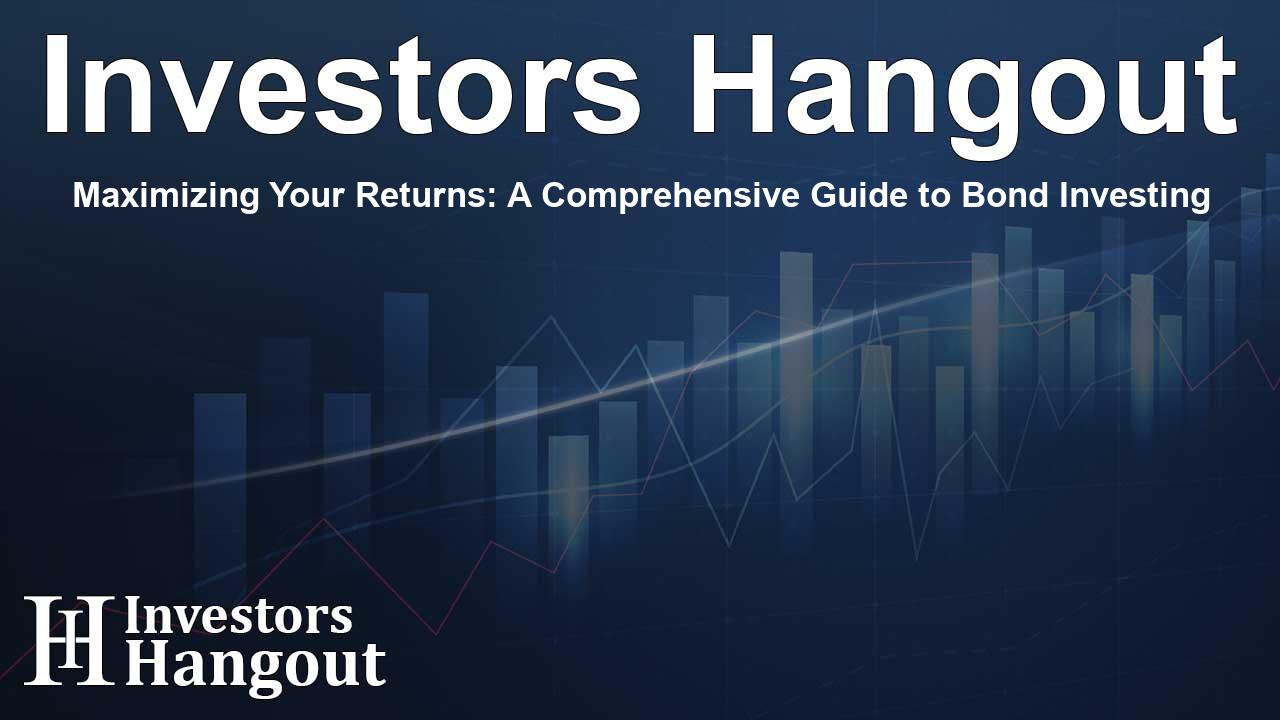Maximizing Your Returns: A Comprehensive Guide to Bond Investing

Bond Investing, Made Clear
Bonds can steady your portfolio and deliver income you can plan around. They don’t move as wildly as stocks tend to, which many investors find reassuring. If you understand how bonds work—what they pay, how they behave, and where the risks sit—you can use them to make your overall plan more predictable without giving up the chance to earn a reasonable return.
Why Many Investors Reach for Bonds
The core appeal is simple: stability and steady paychecks. When you buy a bond, you’re lending money, not buying a slice of a company. That lender role puts you ahead of shareholders if things go wrong. Risks do exist—especially with lower-rated issuers—but for investment-grade bonds, historical default rates are strikingly low, typically between 0% and 0.38%. Add in the comfort of regular interest payments, and it’s clear why bonds are a mainstay for people who want consistent income with measured risk.
The Main Types of Bonds
Most portfolios lean on three broad categories. Each plays a different role, and together they can balance risk and return.
1. Corporate Bonds
Issued by private companies that need to raise money, corporate bonds pay different levels of interest depending on the issuer’s financial strength. Stronger companies generally offer lower yields; issuers with shakier credit tend to pay more to compensate investors for taking on additional risk. Your outcome ties directly to the company’s creditworthiness.
2. Treasury Bonds
These come from the U.S. government and are widely viewed as among the safest places to park money for a period of time. You receive a fixed rate over the bond’s life, which helps with planning. Many investors use Treasuries as the stable core that supports other, more variable holdings.
3. Municipal Bonds
Local and state governments issue “munis” to fund public projects such as schools, roads, and water systems. While their interest payments are generally lower than corporates, municipal bonds often carry tax advantages that can improve the after-tax picture for certain investors.
How Bonds Pay You: Yield and Capital Gains
Bonds can reward you in two ways. The first is yield—the regular interest you collect relative to what you paid. For example, if you buy a bond for $1,000 and it pays $50 per year, your yield is 5%. The second is capital gains, which show up when you sell a bond for more than you paid. If market conditions later let you sell that same bond above $1,000, the difference is profit on top of the interest you’ve already earned.
What You Might Expect, on Average
Setting expectations helps you stay the course. As a broad guide, an all-bond portfolio may deliver an average return of about 5.33%. That figure blends the interest you receive with the bond market’s price movements. Actual results will vary by bond type and what markets are doing at the time.
Corporate Bonds: Yield Expectations
Recent figures put average corporate bond yields in the 4% to 5% range. Before you invest, look closely at the issuer’s credit standing. A stronger balance sheet usually means a steadier—though typically lower—yield, while weaker issuers offer more but carry more risk.
Treasury Bonds: A Safe Investment
10-year Treasuries are a go-to for stability. Today, their yields average around 4.45%, reflecting their continued role as a reliable backbone for many diversified portfolios.
Municipal Bonds: Average Returns
Municipal bonds tend to pay less than corporates or Treasuries, with average returns around 2.12%. Even so, their tax-exempt features can make them appealing for investors who value predictable, tax-advantaged income.
A Simple Strategy for Bond Success
Spread your bets. Diversifying across issuers and bond types can reduce the impact of any single setback while giving you access to different income profiles. A financial advisor can help translate your risk tolerance and goals into a mix that fits—how much stability you want, how much income you need, and which bonds line up with that plan.
Conclusion: Put Bonds to Work
Bonds can balance out the rough edges of investing. They blend income with a measure of safety, and they offer choices—from corporate to Treasury to municipal—that you can tailor to your needs. Understand how they pay, know what drives their returns, and use them with intent. Whether you’re careful by nature or simply want steadier income, bonds can play a meaningful role in your financial path.
Frequently Asked Questions
What are the main benefits of investing in bonds?
Bonds provide steadier performance than stocks and offer regular income payments. For investment-grade issues, historical default rates are very low (typically 0% to 0.38%), which adds to their appeal for stability-minded investors.
How do I decide which type of bond fits me?
Match the bond’s role to your goals and comfort with risk. If you want maximum safety, Treasuries are a common choice. If you’re seeking higher potential income and accept more risk, corporates may fit. If tax advantages matter, municipal bonds can be attractive. A financial advisor can help align the mix with your risk tolerance and objectives.
What’s a reasonable expectation for an all-bond portfolio?
A broad, all-bond portfolio may average around 5.33% over time, combining interest payments with market returns. Your actual results will vary based on the bond types you hold and market conditions.
Are municipal bonds worth considering?
Yes. While their average returns around 2.12% are generally lower than corporates or Treasuries, their tax-exempt features and stable income make them appealing for certain investors.
How can I diversify my bond holdings?
Own a mix of corporate, Treasury, and municipal bonds, and spread your exposure across different issuers. Diversification can help limit the impact of any single bond and may improve the balance of risk and return.
About The Author
Contact Olivia Taylor privately here. Or send an email with ATTN: Olivia Taylor as the subject to contact@investorshangout.com.
About Investors Hangout
Investors Hangout is a leading online stock forum for financial discussion and learning, offering a wide range of free tools and resources. It draws in traders of all levels, who exchange market knowledge, investigate trading tactics, and keep an eye on industry developments in real time. Featuring financial articles, stock message boards, quotes, charts, company profiles, and live news updates. Through cooperative learning and a wealth of informational resources, it helps users from novices creating their first portfolios to experts honing their techniques. Join Investors Hangout today: https://investorshangout.com/
The content of this article is based on factual, publicly available information and does not represent legal, financial, or investment advice. Investors Hangout does not offer financial advice, and the author is not a licensed financial advisor. Consult a qualified advisor before making any financial or investment decisions based on this article. This article should not be considered advice to purchase, sell, or hold any securities or other investments. If any of the material provided here is inaccurate, please contact us for corrections.
